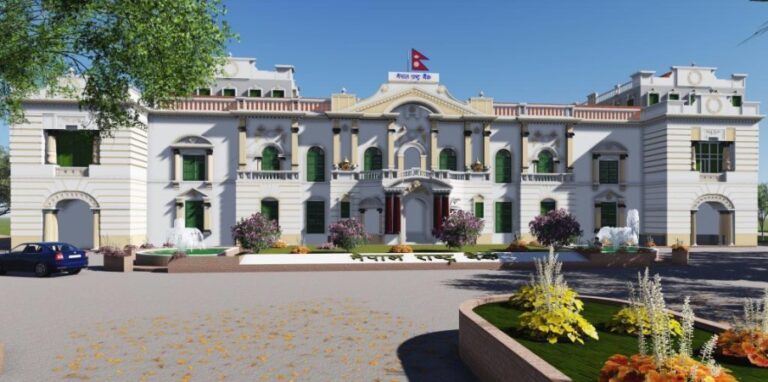
Governor of the Nepal Rastra Bank Maha Prasad Adhikari has said that the central bank was under pressure to bring in expansionary monetary policy for the next fiscal year 2021/22 in order to heal the bruises and wounds the COVID-19 pandemic inflicted on business and economy.
“The NRB should also design its monetary policy in a way that it would support achieving the 6.5 per cent growth rate next year,” he said speaking at a virtual discussion on the monetary policy of the next FY organised by Management Association of Nepal (MAN) on Friday.
However, policies and programmes designed to address these two important aspects of economy will certainly create pressure on price stabilisation, said Adhikari.
He maintained that the NRB was studying the situation and the possible measures to create a balance between these mutually contradictory requirements.
According to the governor, while the central bank was expecting that the situation would have moved to revival by now, t the financial condition was not much encouraging.
“There is pressure on the balance of payment as about Rs. 25 billion to Rs. 30 billion is consumed in a month. Current account deficit has reached Rs. 250 billion. Liquidity situation is not comfortable,” he said.
Governor Adhikari also said that the central bank had taken the ideas like differential interest rates for manufacturing and other business sectors positively.
Speaking on the occasion, President of Nepalese Chambers of Commerce and Industry (FNCCI), Shekhar Golchha said that economic recovery was subject to country’s ability to check the spread of virus and save people from it through vaccination.
“In normal situation, private sector has more interest in fiscal policy but the pandemic has forced us to turn to the central bank in a hope to get economic relief and rehabiliation support via Monetary Policy,” he said.
Golchha stated that tourism, hospitality and advertising are the most affected business sectors and the NRB should facilitate them in obtaining business continuation loan, refinancing and other discounts.
He also said that the concept of project financing should be applied as soon as possible.
Satish Kumar More, President of Confederatio of Nepalese Industries, suggested the central bank to raise the limit of refinancing to 20 per cent of the business exposure size from the current up to 20 per cent of the loan obtained.
Foremer Executive Director of the central bank and chairman of Nepal Bank Limited Basudev Adhikari recommended to redesign and reform deprived sector lending. “It shold be rebranded in the name like micro, small and medium enterprises (MSME) lending. This sector should also be digitalised at the earliest,” he said.
Professor of Economics Dr.. Ram Prasad Gyanwaly said that since most of the economic and trade activities of Nepal happen with India, the former should take Indian monetary system and rates into account.
He also suggested incrasing the Cash Reserve Ratio (CRR) at the banks and financial instutions (BFIs) to 4 per cent from the current 3 per cent.
Reeta Simha, President of Federation of Women Entrepreneurs Associaions of Nepal (FWEAN), demanded special loan facility for women entrepreneurs. The business body has been making this demand since the lockdown last year.
“The central bank should help women entrepreneurs upscale their businesses and enterprises. The documentation process should be simplified,” she said while suggesting to design economic promotion package for returnee women migrant workers.
Pradyuman Pokharel, President of Development Bankers Association, said that development banks should be allowed to increase their paid up capital through the issuance of right shares.
They should have the opportunity to manage government funds and mobilse deposits of financial institutions like Citizen Investment Trust and Employment Provident Fund, he said.
Ramesh Kumar Pokharel, former Executive Director of NRB, said that there was a challenge in implementing non-traditional and relief-oriented programmes in a financial system dominated by commercial banks and collateral-based lending.
Source : TRN,





